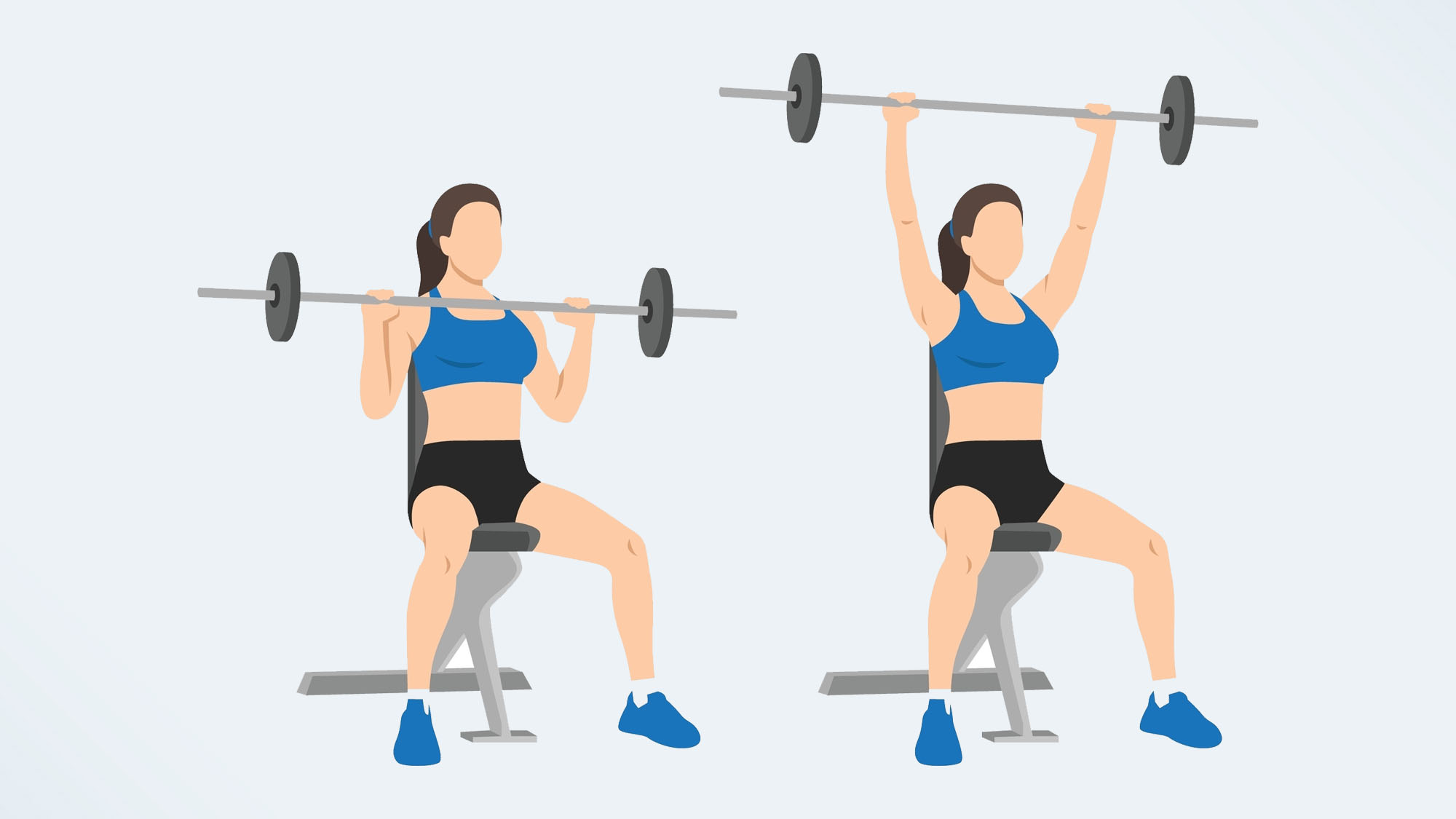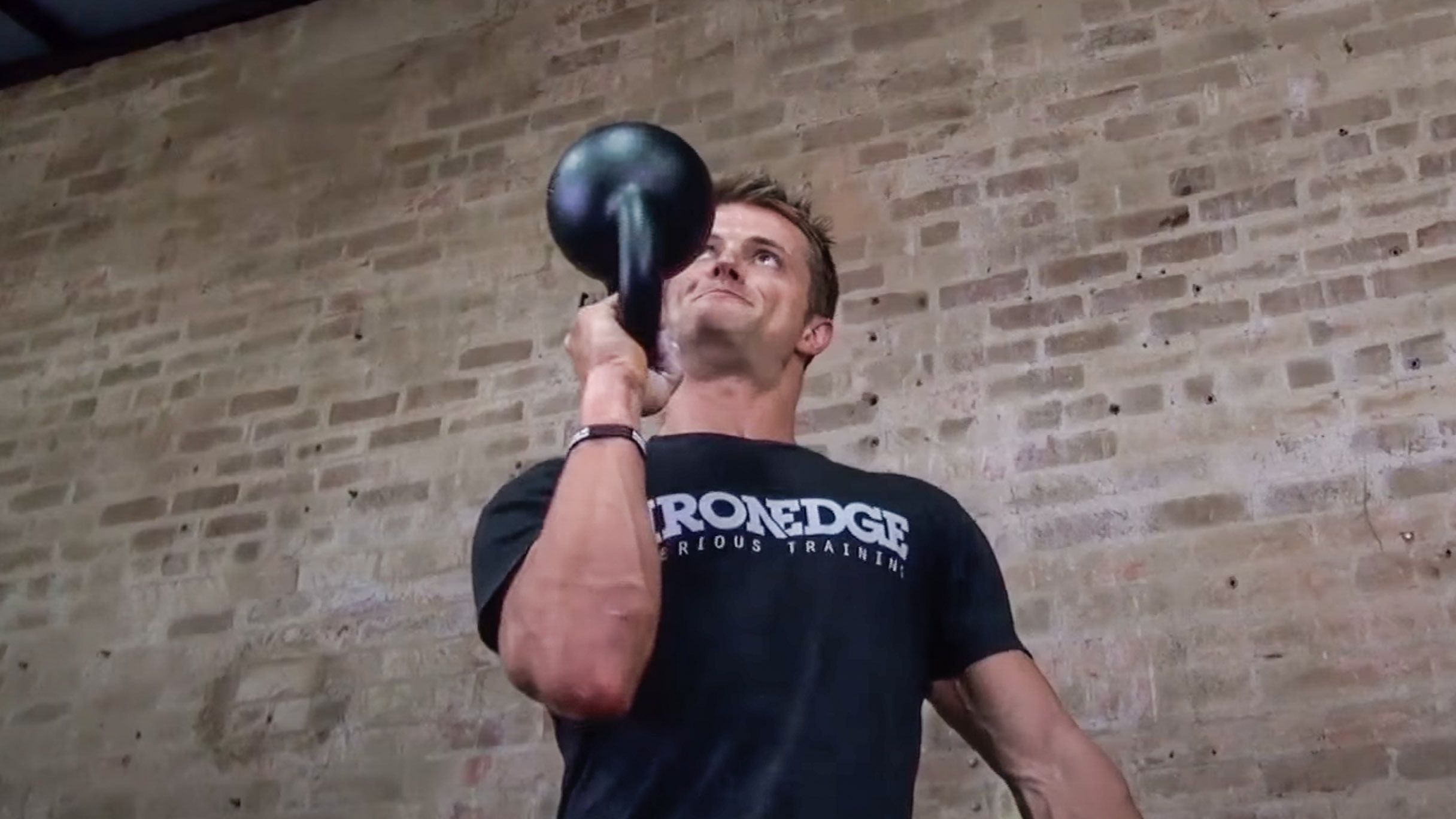I did 20 military presses every day for a week — here’s what happened to my shoulders
This move builds some serious shoulder strength

I was recently cleared for exercise after having a baby, so I’ve been very eager to dust off my favorite dumbbells and get back to work. Despite my enthusiasm, I knew I’d have to rebuild my deep core strength first before attempting most of my pre-pregnancy routine.
However, I did feel strong enough to incorporate some upper-body exercises into my postpartum program. I was doing military presses consistently both before and during my pregnancy, so I decided to kickstart my return by doing 20 military presses every day for a full week.
While this felt like a doable challenge for me, you should always check in with your medical team before trying a new workout, especially if you’re postpartum. Meeting with a certified personal trainer is also a good idea to ensure you're moving correctly.
What muscles does the military press work?
The military press, also called an overhead press, is a compound exercise that targets multiple muscles in the shoulder. This move will work the anterior, lateral, and posterior deltoids along with your triceps, serratus anterior, and rotator cuff muscles.
Military presses also require core engagement. Your transverse abdominis and internal obliques keep your torso stable and your spine neutrally aligned as you press the weight overhead.
How to do the military press

You’ll need a pair of dumbbells, a barbell, or a curl bar for this exercise. If you have any lower back issues, you may also want an adjustable weight bench so you can sit while performing the movement.
- Stand with your feet hip-width apart, holding a dumbbell in each hand.
- Bring the dumbbells to your shoulders with your knuckles facing behind you.
- Engage your core and maintain neutral spine alignment.
- Press the dumbbells towards the ceiling.
- Slowly lower the dumbbells back to your shoulders.
- Continue for the desired number of reps.
- If you’re using a barbell or curl bar, align the bar with your sternum, with your hands placed slightly wider than shoulder width apart. Engage your core and press the bar overhead. Return to the starting position with control.
Here’s what happened when I did 20 military presses for a week
Since I was returning to exercise after a long absence, I split 20 reps into two sets of 10. Here’s what I found after my week-long experiment.
Get instant access to breaking news, the hottest reviews, great deals and helpful tips.
I had to do them seated at first…
Pregnancy really does a number on your core, and I’ve noticed the lack of strength and stability in my abs even during the simplest of moves.
Knowing that I was dealing with some serious core strength deficits, I decided to perform the exercise seated with back support for the first few days. This was the right choice, as even seated, I could feel the muscles in my back trying to overcompensate for my weak abs. Dropping the dumbbell weight alleviated this problem, and the exercise still challenged my shoulder muscles.
Keep this in mind if you’ve got lower back issues or compromised abdominal muscles. Doing the exercise seated takes a lot of the core work out of the equation, but sometimes that’s necessary to ensure proper form and prevent injury.
…but I felt strong enough to stand the last few days
Even though I was seated, I still made sure to engage my abdominals throughout the movement. By the time I got to the fifth day of the week, I felt like my core muscles were conditioned enough to try the military presses standing. It was much easier to keep my spine aligned without letting the low back arch.
I finished out the week standing, which was more taxing for my core, but in a positive way. I was starting to see the benefits from military presses combined with my postpartum core routine.
Military presses are primarily a shoulder exercise, but they’re great for building abdominal stability too.
I increased my weight
My fifth day of military presses also came with a bump in dumbbell weight. Before pregnancy, I was doing military presses with 20 pounds regularly, so I decided to jump back in a bit lighter — 15 pounds.
The first few days were harder than I expected, but I started to find my groove by day three. By day four, I barreled through all 20 reps without stopping. I knew that meant I was ready to up the ante, so on day five, I grabbed my 20-pound weights.
I was able to increase my dumbbell weight pretty quickly because my body was used to the movement. If you’re trying military presses for the first time, be wary of increasing your weight too quickly. Doing so could result in injury.
Performing them with a curl bar was more challenging than with dumbbells
Since the dumbbells were starting to feel easy, I swapped them for a curl bar on the last day of the week. Curl bars look similar to a barbell but are much shorter and lighter, making them accessible to almost anyone.
I selected a 35-pound curl bar, which wasn’t as heavy as the dumbbells I’d been lifting. The weight displacement on a curl bar is much different than dumbbells, though, and that threw me off a bit. I even developed some slight shoulder pain on the last few reps, and could feel my abdominals working hard. I had to rest before I got to the end of my sets.
Doing military presses with different pieces of equipment, like curl bars or kettlebells, could add some much-needed variety to the movement.
More from Tom's Guide
- I'm a personal trainer — here's 3 hip-opening exercises to reduce stiffness and boost lower-body mobility
- This routine is designed to improve your lower body’s range of motion, increase blood flow, and enhance joint mobility
- Personal trainer shares a five-move mobility routine to unstick tight hips and shoulders using your bodyweight.

Jennifer Rizzuto is a freelance writer and certified personal trainer based in Long Island, NY. She covers various fitness-related topics and reviews for Tom's Guide. She also writes sketch comedy and short films, and performs frequently as an actor, singer, and improviser. When she's not writing, working out, or performing, you'll find her trying to convince her husband to get a dog.
You must confirm your public display name before commenting
Please logout and then login again, you will then be prompted to enter your display name.
